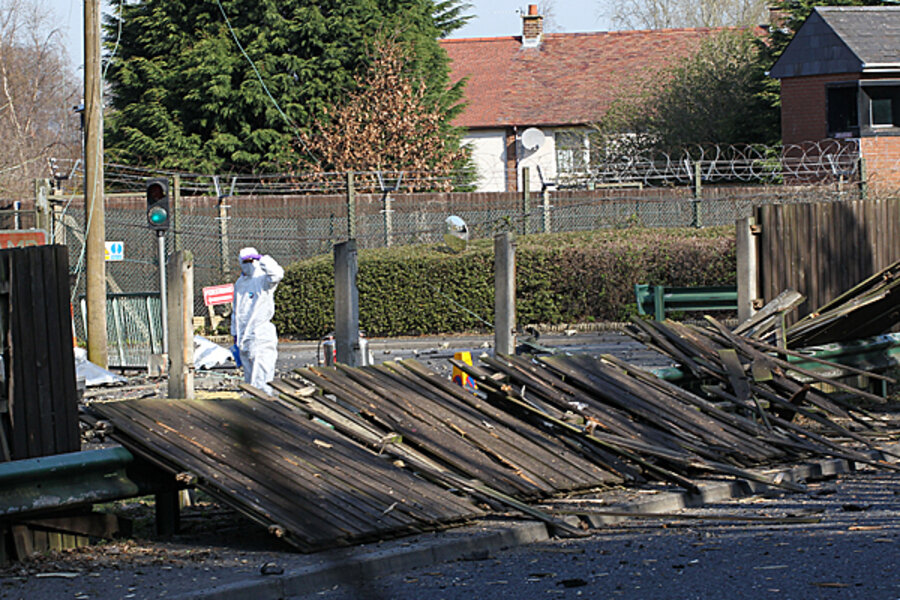Real IRA bombing meant to derail last step of N. Ireland peace
Loading...
A splinter group of the Irish Republican Army detonated a car bomb outside the British intelligence headquarters in Belfast, Northern Ireland, on Monday, just minutes after the official transfer of police and justice powers from Britain to Northern Ireland.
The bombing appeared to be an attempt to harm the transfer of power, the last step of a 1998 peace agreement that ended decades of violence in Northern Ireland. It also appeared to make a statement by targeting the Northern Ireland headquarters of MI5, Britain's domestic spy agency. While Britain is handing over most justice powers to Northern Ireland, MI5 will still play a "lead role in gathering anti-terrorist intelligence in Northern Ireland," reports the Associated Press (AP).
The transfer of power marks the first time in 38 years that Northern Ireland will control its policing and justice. Northern Ireland lawmakers are expected to elect David Ford of the Alliance Party as justice minister Monday. The AP reports that his selection represents a compromise between rival Irish Catholic and British Protestant politicians.
Ford's party, unusually for Northern Ireland, seeks support equally from both the Protestant majority and Catholic minority. Until now Alliance has been excluded from power-sharing posts because of its weak electoral support.
But the two hard-line opposites leading the coalition — the Protestants of the Democratic Unionists and the Catholics of the IRA-linked Sinn Fein — have backed Ford as a compromise candidate because neither party wants the other side to control the politically sensitive justice portfolio.
As the deal for transferring power grew closer in recent months, violence increased – with Monday's bombing being the latest attack (see Reuters timeline).
The Guardian reports that the Real Irish Republican Army, a splinter group from the Provisional IRA, took responsibility for the bombing, which occurred just after midnight and did not cause any serious injuries. The Real IRA was also responsible for killing two British soldiers last year in Northern Ireland, the deadliest attack in more than 10 years.
According to The Guardian, IRA militants hijacked a taxi and planted the bomb inside, then held the taxi driver’s family hostage and forced him to drive the bomb to the British Army barracks where the MI5 headquarters are located, in a suburb near Belfast.
Reuters reports a high risk of further attacks by dissidents who do not approve of Northern Ireland’s peace process, but Northern Ireland’s Secretary of State Shaun Woodward insisted the majority of the public supports a peaceful political process.
"The democratic transition (of justice powers) stands in stark contrast to the activity of a criminal few who will not accept the will of the majority of people of Northern Ireland. They have no support anywhere," Woodward said in a statement.
The Guardian reports that Real IRA appears to be drawing tactical inspiration from the Provisional IRA during the Troubles, when the paramilitary organization used violence to try to bring about a united Ireland independent from Britain.
In planning their attack on the MI5 regional HQ – the largest outside the security services' national headquarters in London – the Real IRA is following the terror tactics of the Provisional IRA at the height of the Troubles. The IRA selected high profile targets such as the City of London in its bombing campaign during the 1980s and 1990s. The Real IRA's strategy is to use such attacks to destabilise Northern Ireland and drive a wedge between unionists and mainstream republicans at Stormont.





